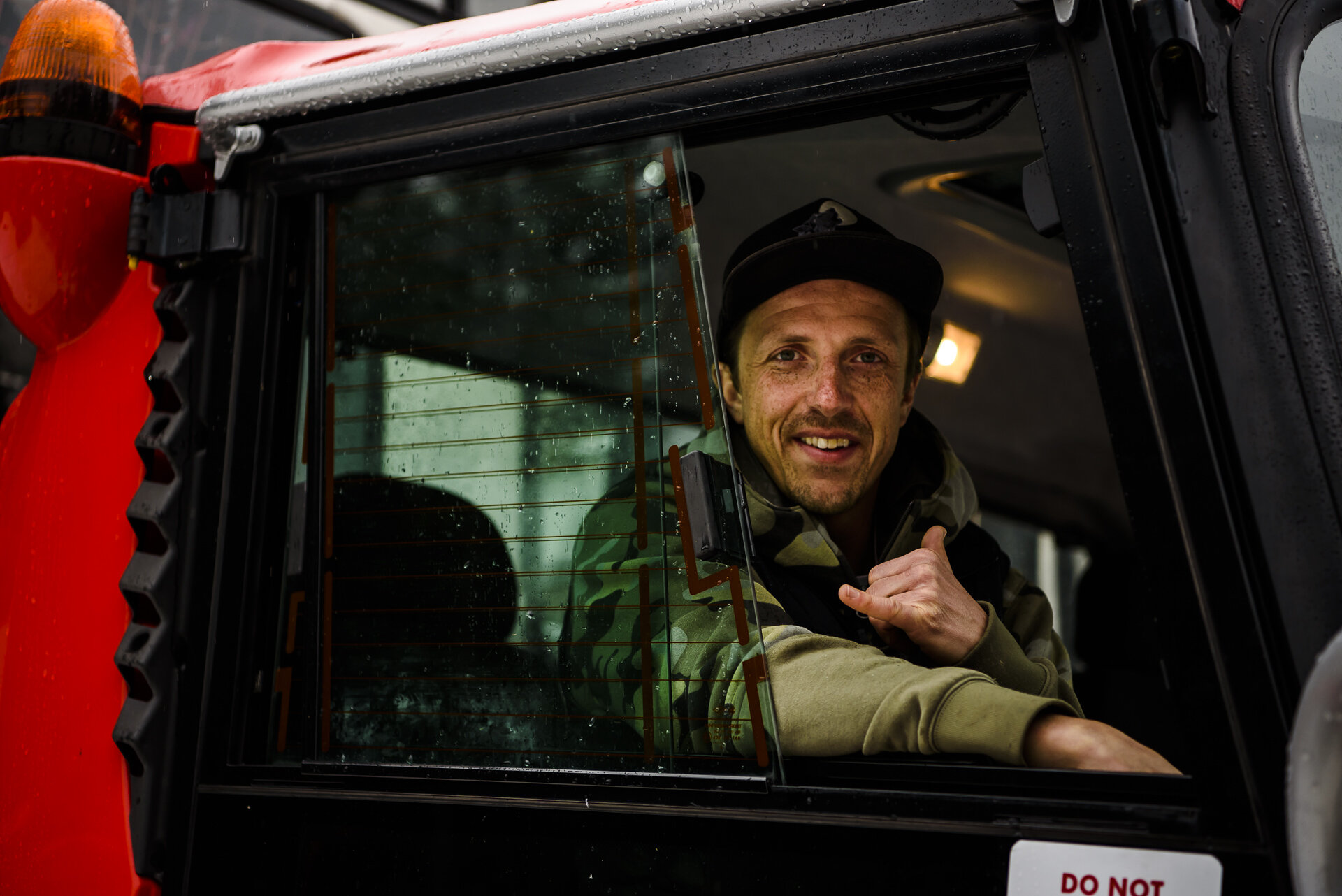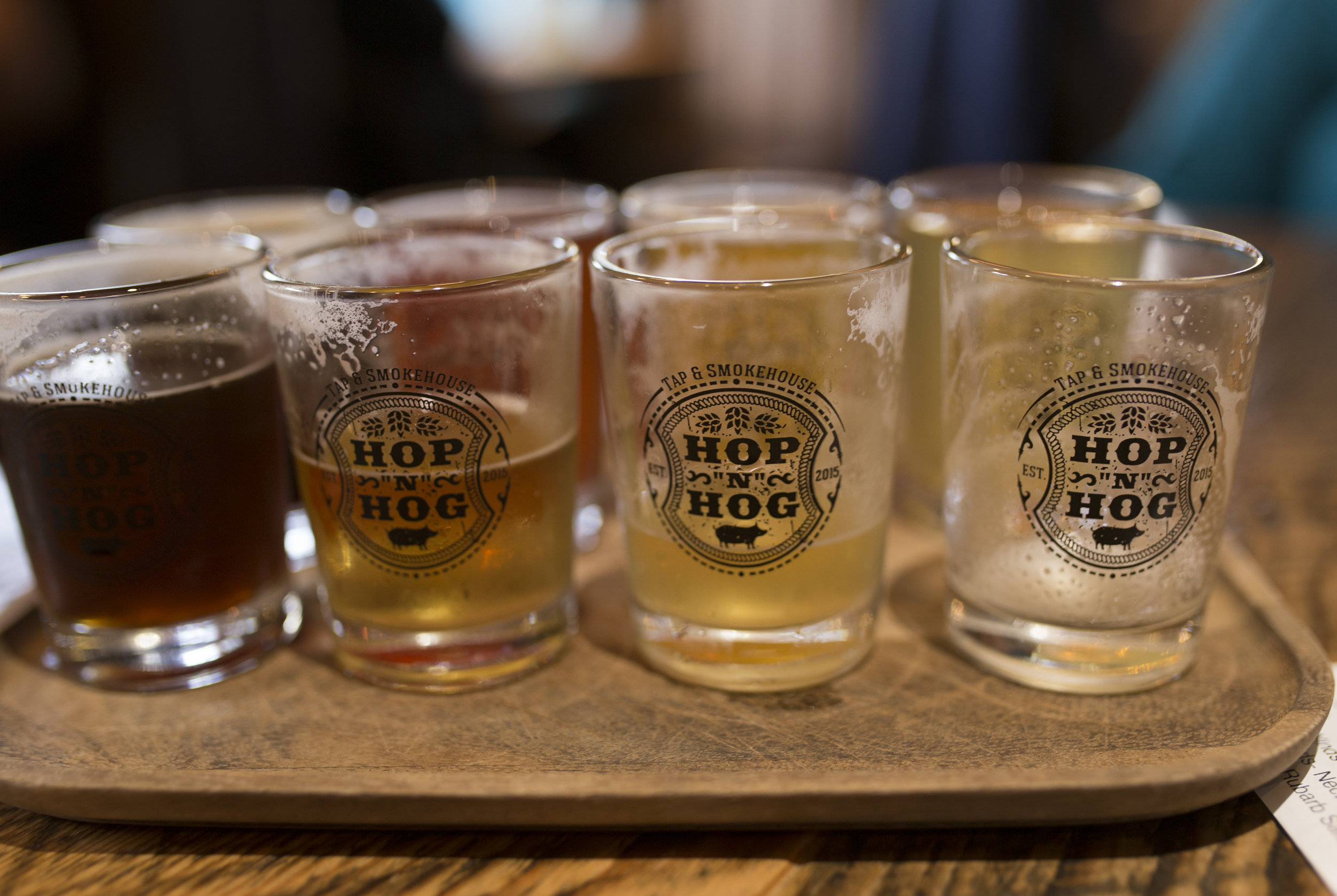Gratitude - how one champion skier earned a new perspective of the land
In 2004, Josh was in a life-changing freestyle skiing accident that left him as a T11 full paraplegic. But, despite seemingly insurmountable odds, Josh persevered, becoming the Para-Alpine World Champion in 2009. Read his story and his view of why do so many incredible people choose to call the North Okanagan home?
Here is the question I ponder from time to time: why do so many incredible people choose to call the North Okanagan home? From professionals and entrepreneurs to nomadic travelers and world-class athletes - the number of incredible humans who could effectively live anywhere they want with the work they do, still choose to make their home here, in the wonderful North Okanagan.
Could it be the robust variety of parks and ecosystems that are literally just outside your door? From the incredible trail network and vistas of Kalamalka Park to the wide variety of trail candy that surrounds Ellison Park, such as Predator Ridge and Sparkling Hill Resort, or perhaps it’s the lake life that keeps drawing people from all around the world to visit here.
It’s hard to deny that we live in nature’s paradise.
So what brought me here you might ask? It was work that pulled me from my roots in the Kootenays (if you would be so generous to call being a professional ski coach, work). It can certainly feel like a job at times; however, the reality I see is that I was hired to spend time with kids in the great outdoors and share with them my passion for mountain culture - blended with a healthy mix of competitive fire.
But in 2004, my life changed forever in a ski accident, leaving me paralyzed from the waist down.
It seemed obvious to stay in the community with the kids I was coaching after my accident, although my heart did long to return to the mountains from where I came. Ultimately, we experienced this trauma together and it felt like we needed to work through it together as well.
Clearly, one could yarn on for days about the physical beauty of the Okanagan to the degree I have. We are blessed beyond measure with the abundance and variety of life in this valley. In short, what kept me here in the Okanagan is the incredible people, the community and the endless possibilities that make up this geographical goldmine. They say it takes a village to raise a child, true. It also takes a community to support an athlete. My success in life is a direct result of the environment that I spend the most time in.
Okay. From an accessibility standpoint, er ... seated perspective, this valley provides an abundant amount of barrier-free opportunities for all walks and rolls of life to enjoy. A nice gentle stroll on the newly built rail-trail that connects Vernon to Kelowna (on the edge of one of the top 10 most beautiful lakes - Kalamalka - in the world, says National Geographic) to the epic vantage points of the Trestles along the Kettle Valley to the wide variety of trails in Kal and Ellison, home has a little something for everyone.
The icing on the cake for a guy like me, though, is my home mountain, Silver Star. In the early days, it was a venue for me to hone my skills when I started my campaign to ski for Canada in the Vancouver 2010 Games. It clearly provided me the environment needed to ski with the best in the world. Today, I see Silver Star as a global hub for skiers and mountain bikers alike, from the aspiring world champion to the young families who are looking for a place that has it all: Nordic, alpine, bike, skate and, of course, all the little details that make a visit here so memorable - including incredible world-class views and food to savour.
So the question that remains is no longer why, but when and how will you spend your time here?
About Josh Dueck
Some spirits are simply unbreakable.
In 2004, Josh was in a life-changing freestyle skiing accident that left him as a T11 full paraplegic. But, despite seemingly insurmountable odds, Josh persevered, becoming the Para-Alpine World Champion in 2009. He won a silver medal in Vancouver 2010 and an X Games gold medal in 2011. In Sochi 2014, Josh's story continued to inspire. On the 10th anniversary of his accident, he won a Paralympic silver medal for Canada. Days later, he won gold in the Super Combined to become Paralympic Champion and Canada's Flag Bearer.
Today, Josh continues to inspire and motivate as a speaker, leader and advocate for the Thompson Okanagan, accessible sport and gratitude.
The Science Behind the Scenery
Why is the Thompson Okanagan so beautiful in fall? Like the other three seasons, the region has a swath of lakes, mountains and vistas that are breathtaking, but in autumn the foliage really stands out. We wanted to know why, so we went to an expert.
Professor Lyn Baldwin creates as a visual representation of the natural world.
Lyn Baldwin is an associate professor in the Department of Biological Sciences at Thompson Rivers University in Kamloops. But she is more than a botanist; she is an award-winning teacher who focuses her scholarly work on reframing the natural environment in a way that inspires her students to have a deeper understanding of the natural world, often through drawing. In fact, she has been known to present at Tourism conferences and offers a niche workshop on creating journal entries that provide a visual memory of a trip or experience.
She is also an accomplished non-fiction essayist and artist. (Her blog can be found here.) So when I wanted to know more about why the leaves in the Okanagan create such a breathtaking autumn landscape, I went to the expert.
The three Cs of leaf function
Lyn explained that leaves are green because of chlorophyll, which gives plants their green colour and absorbs light energy. The chloroplast work to convert the light energy into sugars that can be used by cells - chlorophyll and the chloroplast function together to allow for photosynthesis to occur and absorbs sunlight. The carotenoids are responsible for the yellow and orange pigments in the plant, which become apparent when the leaves change colour.
As temperatures change and decline, the leaves of deciduous plants begin to die. These leaves have huge amounts of nutrients, so there is an exchange occurring where the nutrients from the leaves are being sucked back into the tree. As these nutrients are being returned to the tree, its unmasking the carotenoids, showing off the colours.
Colour across the spectrum
While carotenoids also help show the red pigments in trees, specific types of tree leaves will turn red, but not all. Sugar maples are common in the Thompson Okanagan and turn red, and that’s because they have anthocyanins, which are the blue, red and purple pigment found in 70 per cent of plants. There are two popular hypotheses about why leaves turn red: Red as an umbrella, and red as an alarm.
The theory that leaves turn red as an umbrella says that as the nutrients are being reabsorbed from the leaves into the tree, chlorophyll is being dismantled, and the red pigment creates a more efficient reabsorption. The theory that leaves turn red as an alarm is because in the fall many trees are attacked by insects laying their eggs; therefore, the red pigment of the leaves warns the insect that this tree is well protected and that it shouldn’t bother laying its eggs. It’s the ecological equivalent of a skull and crossbones. You can read the scientific literature here.
Pretty as a picture
One of the most beautiful parts of autumn is seeing the leaves change colour. There are specific areas in the world that are well-known for fall foliage, including the eastern United States and Canada. But the Thompson Okanagan is made up mostly coniferous trees, like pine, spruce, fir and cedar. Most coniferous plants don’t change colour during the fall. (you can tell the difference between coniferous and deciduous--trees that lose their leaves after they change colour--because they have needles instead of leaves and use cones instead of flowers to spread their seeds) And yet, some of the most spectacular fall scenery can be seen in the Okanagan. We have maples that change from green to yellow to orange, and we have Golden larches, which are deciduous conifers--a very special type of tree.
So now you know why a tree changes colour in the fall - it is preparing itself for winter, where it lies dormant and waits for spring! And, you’ll be pleased to know that the Nature Conservancy of Canada now says to leave the leaves on the ground!
About Cait Wills
Born in Vernon and raised around the world, Cait Wills is a passionate advocate for the Thompson Okanagan region. As Storyteller Specialist for the Thompson Okanagan Tourism Association, Cait is eager to showcase people, places and things in the region. If you have a suggestion on something you would like to know more about, please drop her a line at media@totabc.com.
Similkameen Valley: The Hidden Gem
Visit the Similkameen Valley, a unique and hidden region unlike any other in Canada. Whether you’re visiting Keremeos, Hedley, Princeton, or Manning Park, you’re sure to find something that will put you in a state of awe.
Visit the Similkameen Valley, a unique and hidden region unlike any other in Canada. Whether you’re visiting Keremeos, Hedley, Princeton, or Manning Park, you’re sure to find something that will put you in a state of awe.
Boasting both the Organic Capital of Canada and the Fruit Stand Capital of Canada in Cawston and Keremeos, the area is overflowing with organically produced fresh fruit and unique experiences. The agricultural scene in this region is incredible with many multigenerational farms calling this valley their home. The farmers continue to contribute to the community, and are more neighbours and friends than they are big-company agriculturalists.
Often overlooked because of the Okanagan Valley, the Similkameen Valley’s wine scene is vibrant and unique. Locations like Corcelettes Estate Winery, Seven Stones Winery, Vanessa Vineyard and Rustic Roots Winery & Cidery all have original and different experiences, wines, and tastes. From Seven Stones’ caves to Corcelettes’ view, there’s something for every wine snob and wine rookie alike.
Though the agriculture and wine are incredible in the valley, that just scratches the surface of what this beautiful region has to offer. The outdoor experiences are top notch on their beautiful stretch of Kettle Valley Rail Trail, connecting them to the rest of the Okanagan. You could also explore the incredible provincial parks like Bromley Rock and the ever-impressive Manning Park and go hiking, paddling, camping, or just relaxing. Finally, the Similkameen River is well known for its fishing, both fly and normal.
Whether you’ve never been to the Similkameen or you live in the area, we encourage everyone to discover (or re-discover) this beautiful, unique and often overlooked region of the Thompson Okanagan. These hidden, vibrant communities are all locally run and supported, and give an honest and real experience of what life in the Similkameen valley is like.
ABOUT THE AUTHOR
Alastair is a Canadian writer and blogger. He grew up in Oliver and has settled in Kelowna with his wife, Adrienne. When he isn’t typing up a blog about the newest thing in the Okanagan, you can probably find him on a local patio with a cold-brew in hand (either coffee or beer).
7 Ways to Connect With Nature This Winter
Stunning views and slim crowds are just two reasons to make winter travel in the Thompson Okanagan a priority this season.
Winter Travel in the Thompson Okanagan
Stunning views and slim crowds are just two reasons to make winter travel in the Thompson Okanagan a priority this season. In this article, I’ll go through seven winter tours to connect with this season.
Explore Winter in Wells Gray with Clearwater Lake Tours
Wells Gray Provincial Park is an incredible set for winter exploration. In the summer, the team at Clearwater Lake Tours offer boat rentals, lake tours and delectable food at their cafe/restaurant. In the winter, they offer fully-catered multi-day trips to their huts within the park. You’ll be picked up by ‘snow taxi’ (snowmobile) and taken to their home base beside Clearwater Lake. I took this tour 2 winters ago and I still cherish the memories. Our guide Ray ensured that we ate like royalty, explored to our hearts content and were kept comfortable with log fires and cozy cabin accommodation. The only worry was having enough memory on our cameras. During the daytime we explored the frozen waterfalls, snowshoed the trails and paddled on the frosty lakes. In the evenings we ate and drank, played cards and enjoyed the company of our fellow winter explorers.
2. Snowshoe or hike the Myra Canyon Trestles
Locomotive history, expansive trail systems and LOTS of snow. Myra Canyon is just a short jaunt from Kelowna (Kilawna) but thanks to the elevation, there’s plenty of snowfall to enjoy. Bring your own or rent some snowshoes and take in the epic views in the winter.
3. Relax with a Fireside Dinner at Apex Mountain Resort with Hoodoo Adventure Tours
If the amazing staff at Hoodoo Adventures aren’t enough to convince you to head on an adventure with them, the chocolate fondue and wine will do the trick. On this tour, you’ll head to Apex Mountain Resort for a sunset snowshoe followed by a 3-course bonfire dinner catered by the fantastic Lakebreeze Winery.
4. Take a Horse-Drawn Sleigh Dining Tour at Big White Ski Resort OR Silverstar Mountain Resort
Choose between classic Canadian brunch or a candle-lit dinner. This tour starts at Big White’s Happy Valley Day Lodge where you’ll become acquainted with your transportation for the evening - the stunning Big White Clydesdale horses. These fuzzy locals will transport you via horse-drawn sleigh to a quiet cabin in the woods where you’ll enjoy your multi-course meal.
> Big White Ski Resort Sleigh Dining Tours
> SilverStar Mountain Resort Sleigh Dining Tours
5. Embrace Outdoor Theatre at Caravan Farm Theatre in Armstrong
I had lived in the Okanagan for quite a few years before I heard of Caravan Farm Theatre. If we’re talking about best-kept secrets in the Thompson Okanagan – this is definitely one of them. This Armstrong-based outdoor theatre puts on small but high-caliber shows throughout the year. Books early, as tickets can be competitive, especially for their Winter Sleigh Ride Show. In 2018, the show took place December 11th - 30th and features the retelling of the Inuit legend of the Goddess of the Arctic, told with music, mask and magnificent large-scale puppets.
6. Guided Ice Fishing at Sun Peaks Resort
Join local guide Campbell of Elevated Fishing Adventures for a unique day out on the ice. Thanks to convenient transportation, a heated tent and hot beverages - ice fishing is surprisingly comfortable. Try your hand at catching tasty wild Rainbow Trout in one of the many picturesque mountain lakes surrounding Sun Peaks Resort.
7. Wells Gray Adventures - Ski Hut Trips
In Wells Gray Provincial Park, you’re among giants. Whether they be old growth forests, untouched mountain ridges or the famous wildflower meadows - this is a vast playground. There are three huts that exist within this set: Trophy Mountain Lodge, Fight Meadow Lodge and Discovery Cabin. If you’re new to the back country, let Wells Gray Adventures take care of the details. Their packages include guiding, accommodations, catering and transportation to and from the trail head.
These huts are available year-round. In the winter, this area has one of the most consistent snowfalls in British Columbia - and terrain exists at a variety levels. Access via helicopter and snowcat are available.
Winter Safety
Winter adds a layer of complexity to travel - however, you shouldn’t let this stop you from exploring. To ensure you’re well-informed and prepared, visit Adventure Smart for safety resources.
Travel safe and as always.
ABOUT THE AUTHOR
Meghan Reading is a Canadian travel photographer. She grew up in the rocky mountains of Alberta but now calls British Columbia home. While she looks forward to continuing to explore the world with her camera, her favourite destination will always be her own backyard.
Discover the Beauty of Boundary Country
Along the Crowsnest Pass in southern British Columbia sits Boundary Country - an outdoor lovers dream with a rich history. Find out more about what makes this area special.
5 Reasons to Add Boundary to Your Travel Plans
Along the Crowsnest Pass in southern British Columbia sits Boundary Country - an outdoor lovers dream with a rich history. Read on to find out more about what makes this area special.
1 - Get a glimpse of northern Washington from the 49th parallel
Did you know that you can hike up the Midway Mountain Trail and actually SEE into the United States? An added bonus is that the view in all directions is worth the trek.
Find out more about Boundary Country trails here: https://boundarybc.com/play/trails/
2 - Become a History Buff in Greenwood
From it’s booming days in the 1890’s as a mining hub, to the insurgence of Japanese Canadians in the 1940’s, to the outdoor recreation hub of today - the smallest city in Canada has an intriguing history worth delving into.
Read more about the history of Greenwood here: http://greenwoodcity.com/visiting/heritage-history
3 - Paddle across Canada’s warmest tree-lined lake
Christina Lake is touted as “the warmest tree-lined lake in Canada” and is easily accessible along Highway 3. A beautiful provincial park with a large sandy beach and calm waters throughout the year make this spot popular for water sports.
Find out more about Christina Lake here: https://christinalake.ca/
4 - Start an epic journey at Mile Zero of the Kettle Valley Rail Trail
In the early 1900s, Midway Station was a junction point for railways going east, west and south making it “Mile Zero” of the Kettle Valley Rail (KVR) line. Now, the station is home to the Kettle Valley Museum and is a jumping off point for hiking and biking along the now decommissioned KVR.
Find out more about the KVR here: https://bcrailtrails.com and more about the museum here: https://kettlerivermuseum.org.
5 - Connect with nature
Nature is neat and Boundary Country is a nature lover’s dream. Grab a campsite right along the Kettle River and cast your line to catch your dinner. Hike or bike the numerous trails that take you over waterfalls and through rugged wilderness. View wildlife while exploring the many provincial parks - the opportunities to connect with the great outdoors are endless.
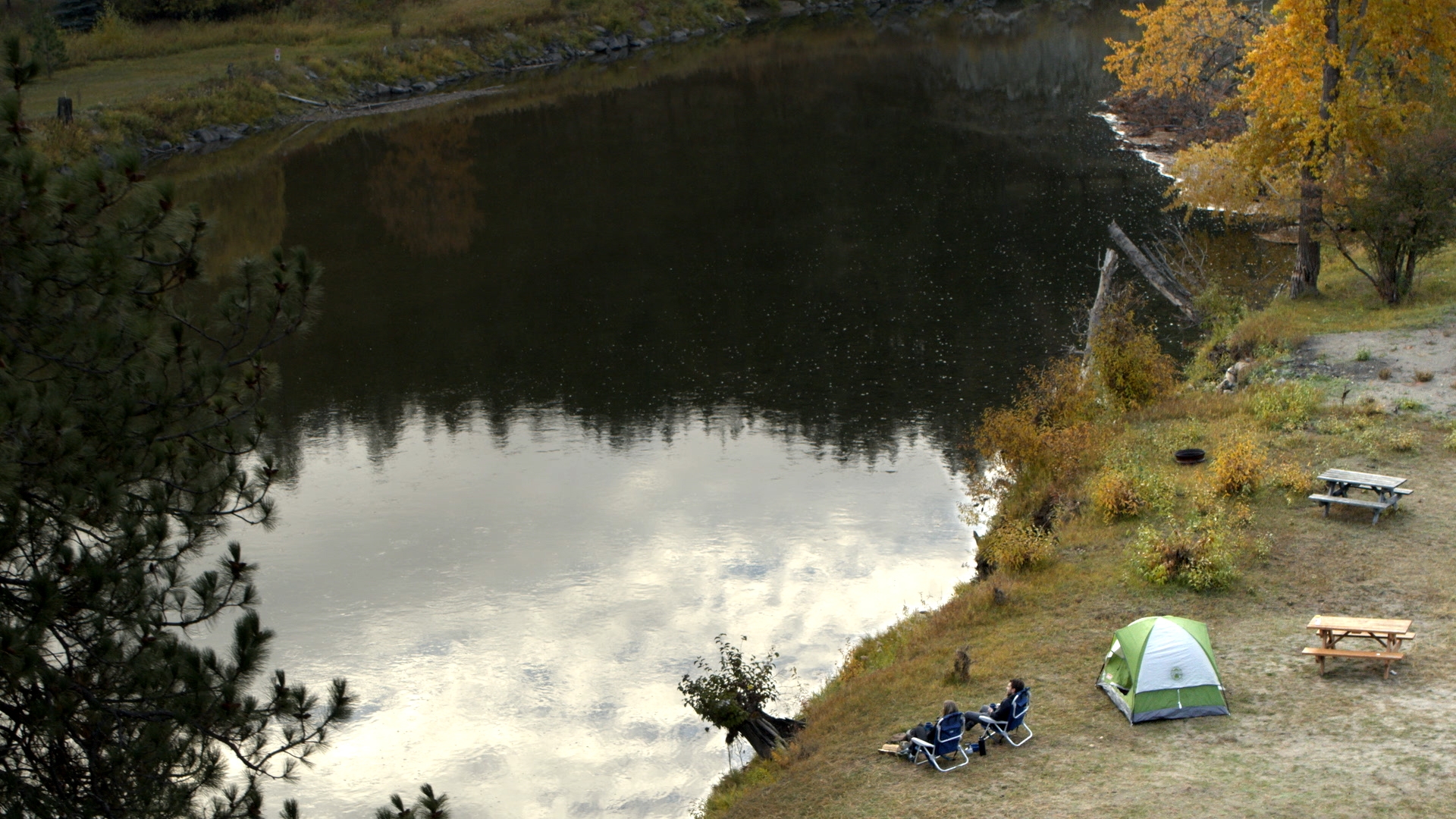
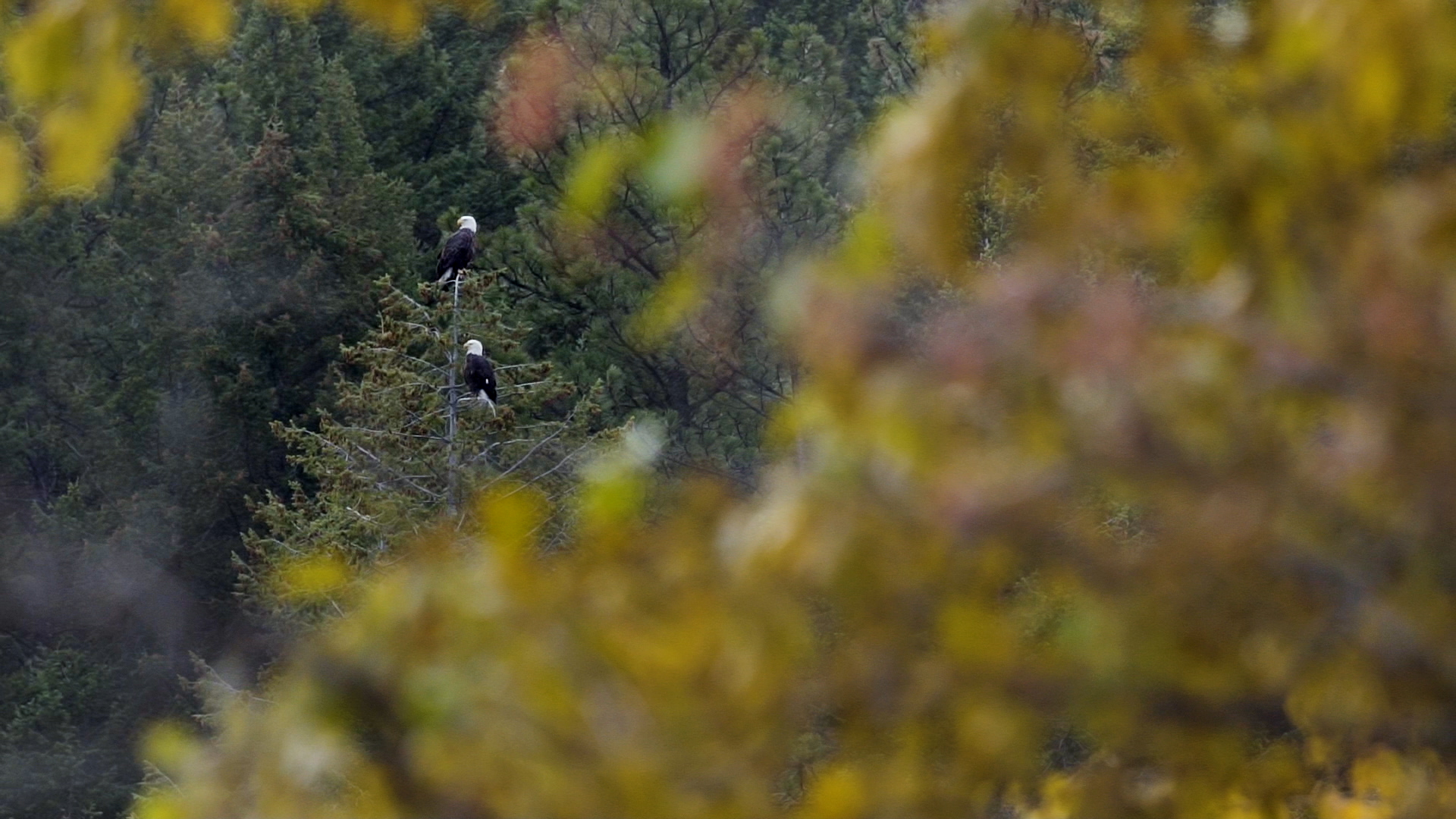

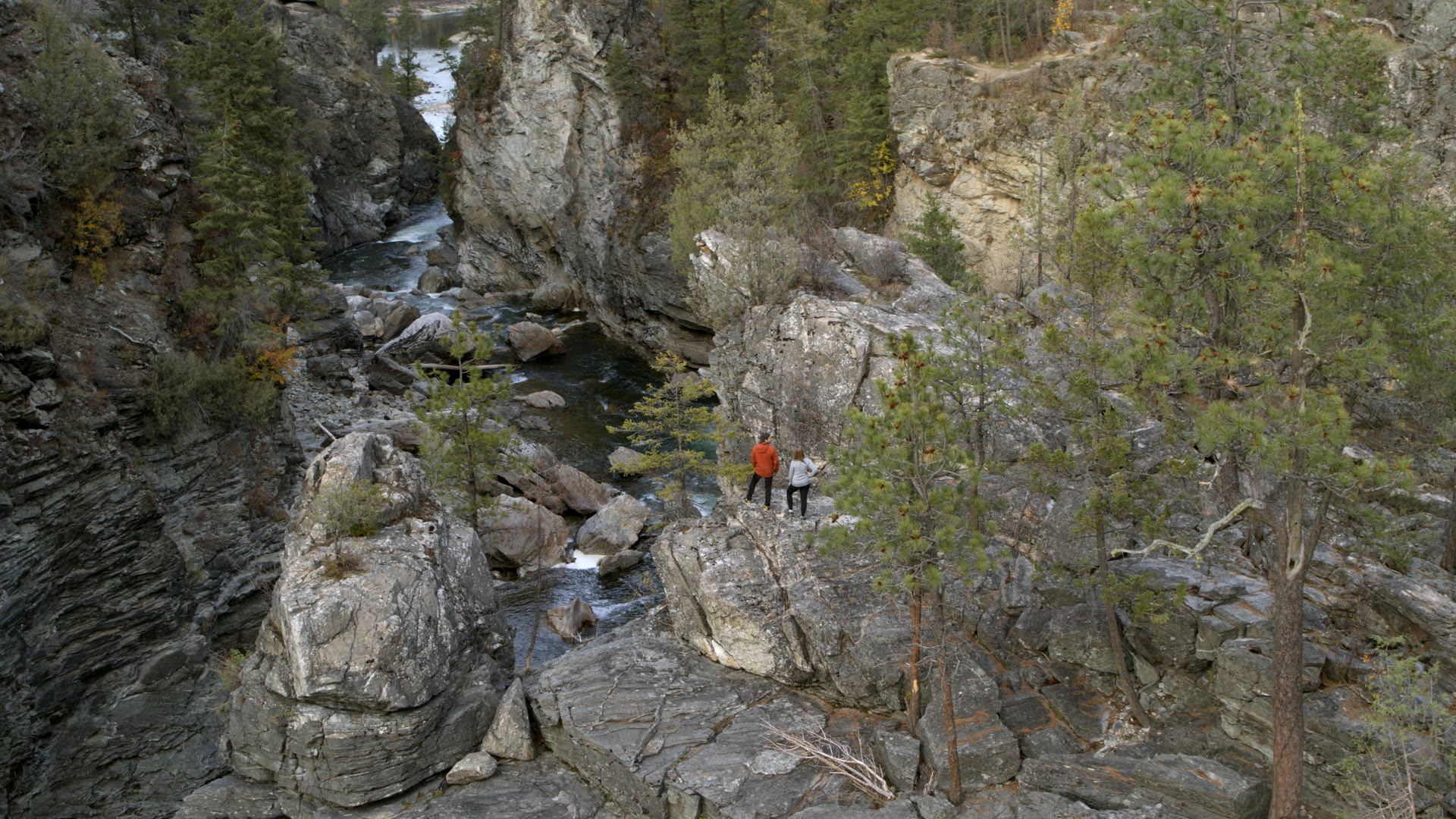
Find out more about Boundary Country here: boundarybc.com
ABOUT THE AUTHOR
Carla Young is the Travel Media & Digital Marketing Specialist at TOTA. Originally from Saskatchewan, she is a recent transplant to the Okanagan and enjoys exploring her new home in her free time.
Adventure Travel in the North Thompson Valley
Tuck into a cozy backcountry alpine cabin after spending the day surrounded by 360 degrees of wilderness.
Backcountry Hut Trips
Tuck into a cozy alpine cabin after spending the day surrounded by 360 degrees of wilderness. Despite the thin air, vast views and sheer isolation never cease to energize me.
Backcountry hut trips can provide some of the most rewarding adventure travel experiences. Luckily for us, BC is home to a wealth of these lodges - they exist in a variety of forms, some as comfortably-catered cabins and others as rustic outposts.
Within the Thompson Okanagan, the North Thompson is a mecca for seasoned adventurers. The best spots aren’t always the easiest to get to, but that’s what makes it rewarding. In this article I’m going to identify three North Thompson backcountry lodge trips worth talking about.
Backcountry Lodges of British Columbia
First, when choosing a backcountry hut to visit, research is key. Access and facilities vary greatly. The Backcountry Lodges of British Columbia Association (BLBCA) make up an extensive network of remote accommodation generally situated in the alpine, above the treeline. Visiting a hut within this association helps to ensure that visitation is properly regulated, lodge operations are sensitive to the environment and are within adherence to BC wildlife and employment guidelines.
Due to remoteness, those who run or visit these lodges are experts in using alternative energy systems, responsibly treating water, and ensuring that visitors tread lightly on the natural environment.
With the exception of some transportation (like helicopters), all activities within the backcountry network are non-mechanized. Leaving the smallest footprint possible is a value that is vital to the preservation of these remote experiences.
In Wells Gray Provincial Park, you’re amongst giants. Whether they be old growth forests, untouched mountain ridges, or the famous wildflower meadows - this is a vast playground. There are three lodges that exist within this set: Trophy Mountain Lodge, Fight Meadow Lodge and Discovery Cabin. If you’re new to the backcountry, let Wells Gray Adventures take care of the details. Their packages include guiding, accommodations, catering, and transportation to and from the trail head.
These huts are available year-round. In the winter, this area has one of the most consistent snowfalls in BC - and terrain exists at a variety of levels. Access via helicopter and snowcat are available.
The Monashee Chalet is located south of Blue River. This dormitory-style hut is basic, but let’s face it - you’re not coming all the way here to relax inside. In the summer, the chalet sits beside a lake and a backdrop of endless alpine hiking. In the winter, this area is known for tree skiing and can be reached by touring or snowmobile.
BLBCA advises that guests booking the chalet will be required to provide a resume of their backcountry lodge experience, guided tours are not explicitly offered.
Set amongst subalpine meadows and lakes, this lodge is on the boundary of Mount Robson Provincial Park and has a sunny exposure to spectacular views.
Dave Henry Lodge accommodates up to 10 people in a semi-divided room format. In the summer, guided hikes or horseback rides can be arranged through the owners. When the snow flies, guided ski packages are also available. The owners also operate Swift Creek Cabins, which are located 14 kilometres northwest of Dave Henry, and make for a great hut-to-hut trip.
Backcountry Safety
It may go without saying, but the backcountry is remote and conditions can be unpredictable. Take the proper precautions before setting out and be prepared. Visit BLBCA Safety Training & Resources.
Winter adds a layer of complexity to travelling in the wilderness. Ensure that you go with a reputable guide or have the proper experience and certification. Check backcountry conditions before departing.
ABOUT THE AUTHOR
Meghan Reading is a Canadian travel photographer. She grew up in the rocky mountains of Alberta but now calls British Columbia home. While she looks forward to continuing to explore the world with her camera, her favourite destination will always be her own backyard.
Disconnecting to Reconnect in Wells Gray Park
Sometimes you need a change in pace, a quiet spot to forget everyday life and soak in nature. Somewhere where there’s no cell service, limited amenities, spotty-to-no-wifi and very little traffic.
No technology, no excess, no stress
Sometimes you need a change in pace, a quiet spot to forget everyday life and soak in nature. Somewhere where there’s no cell service, limited amenities, spotty-to-no-wifi and very little traffic. A place you’re as likely to see wildlife as you are another person. Wells Gray Park, only a few minutes out of Clearwater, BC provides those, while being only a short distance from civilization.
A gem of a park, mostly known for the amazing breadth of waterfalls (39 named, countless others), holds many other secrets. An amazing place for anyone to go, whether you are looking for an adventure or some quiet time away with someone special, there’s something for everyone. There are plenty of beautiful B&Bs to stay at during the fall season, or if you’re well equipped and can brave a little cold, try out one of the campgrounds. We choose to live it up a little and stay in a cozy B&B, the Blue Grouse Country Inn (worth a trip for the breakfast alone, not to mention Regina’s incredible hospitality) right in the middle of the park.
Amenities in the park are limited, so grab some groceries in Clearwater before heading into the park. There are plenty of ways to check out the park aside from driving. There are over 200 km of hiking trails, many great bike trails, endless opportunities to get out on the water (anything from rafting to a slow canoe trip) and even horseback riding! All of these options can help lessen your carbon footprint while visiting.
The park lends itself to opening up to nature - all five senses are touched.
Sight - Put your phone and camera down for a while and use your eyes! Huge vistas, incredible colour palettes and if you’re lucky, amazing wildlife viewing opportunities.
Touch - The coolness of fog, the crunch of frosty grass, the mist running off the falls. Always be respectful of what you are touching - the plants are rugged, but fragile, the animals are accessible but wild, and trails and fences are there for a reason!
Smell - Take a deep breath as often as you can. Leaves decomposing, sweet moss and mushrooms growing in the forests, the occasional waft of late season berries.
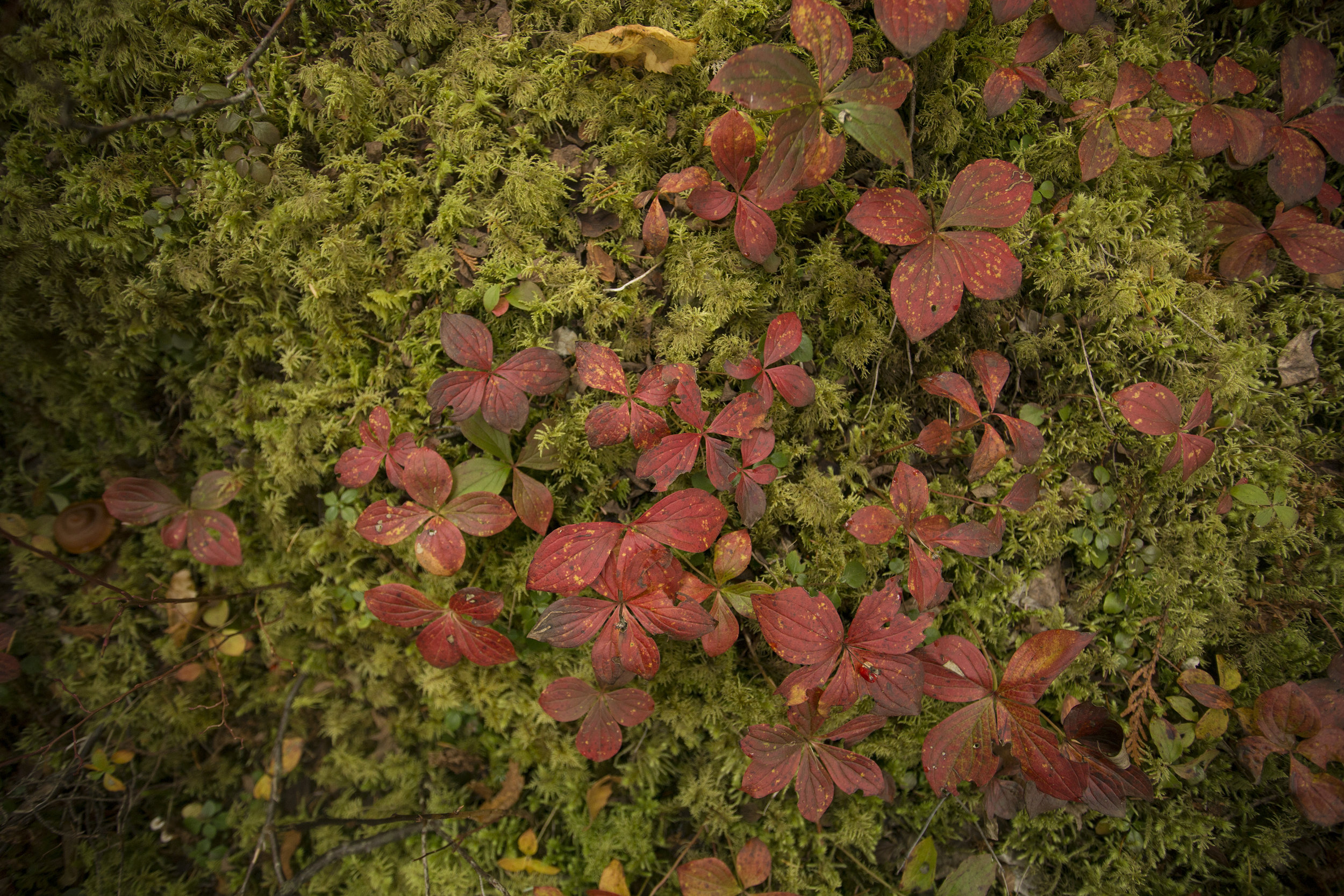
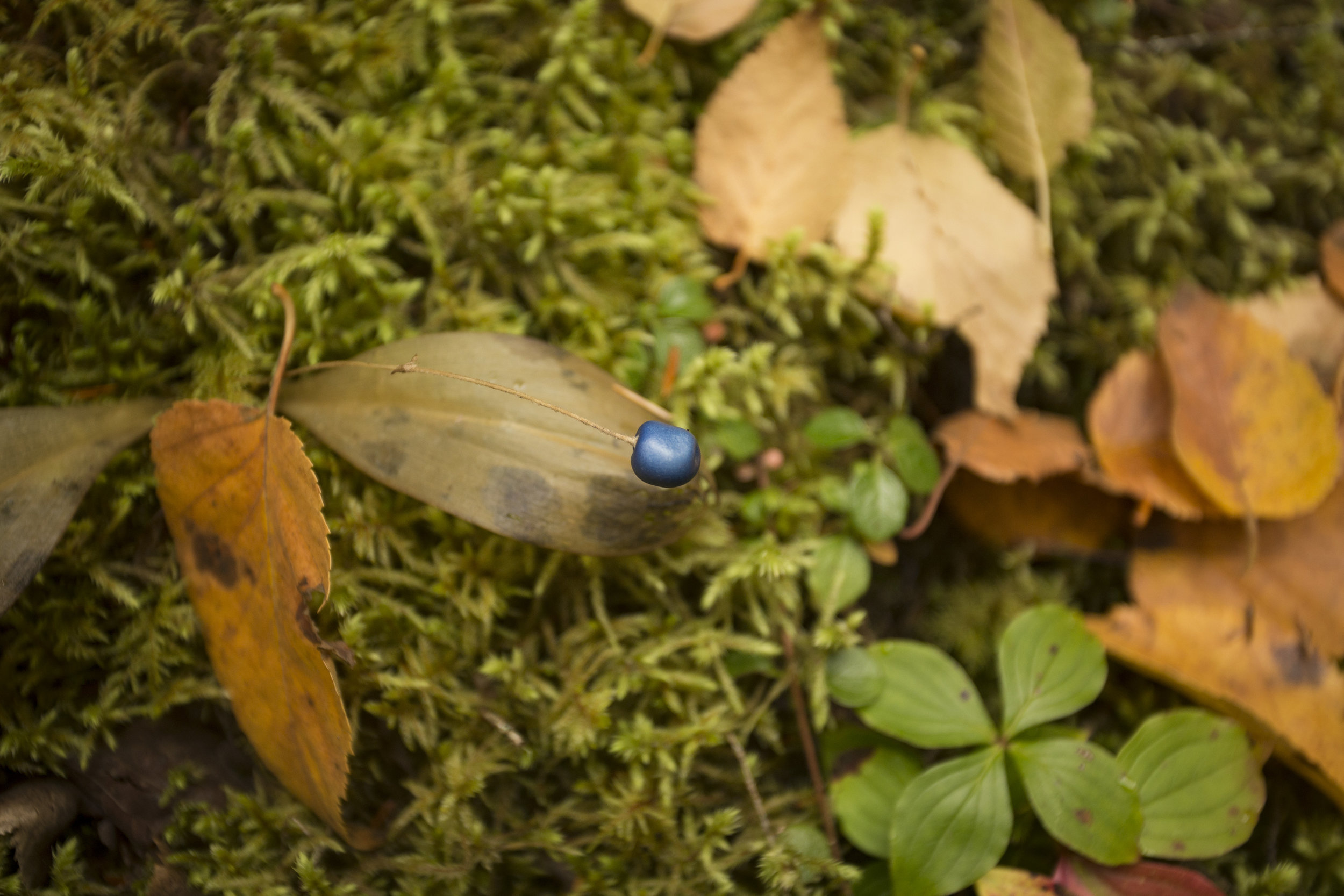
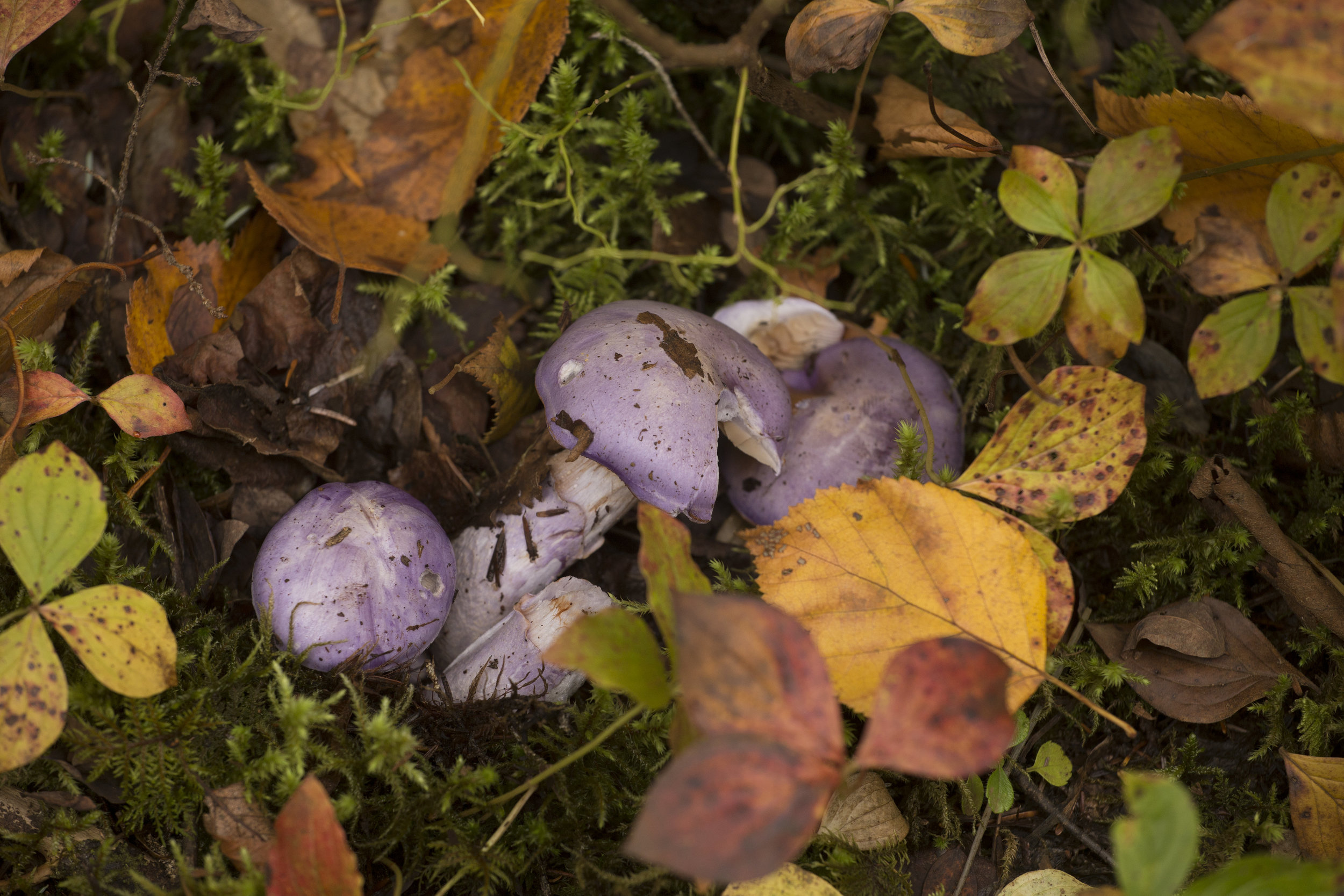
Sound - Don’t just hear; really, really listen. Rustling leaves, the crash of a cascading waterfall, the rush of the river. Absolute quiet in the dark.
Taste - Cool spray from the falls landing on your lips, forests so green you can taste the freshness when you breath in deep. Hop n Hog for dinner.
Come visit Wells Gray. Put your phone away (unless you’re taking photos of course), spend time talking to someone, or just listening to nature. Put your hand in the creek, touch the dewy moss, skip some rocks and breath in deeply. Enjoy unbridled nature. No technology, no excess, no stress. Take nothing but photos, leave nothing but a little piece of your heart.
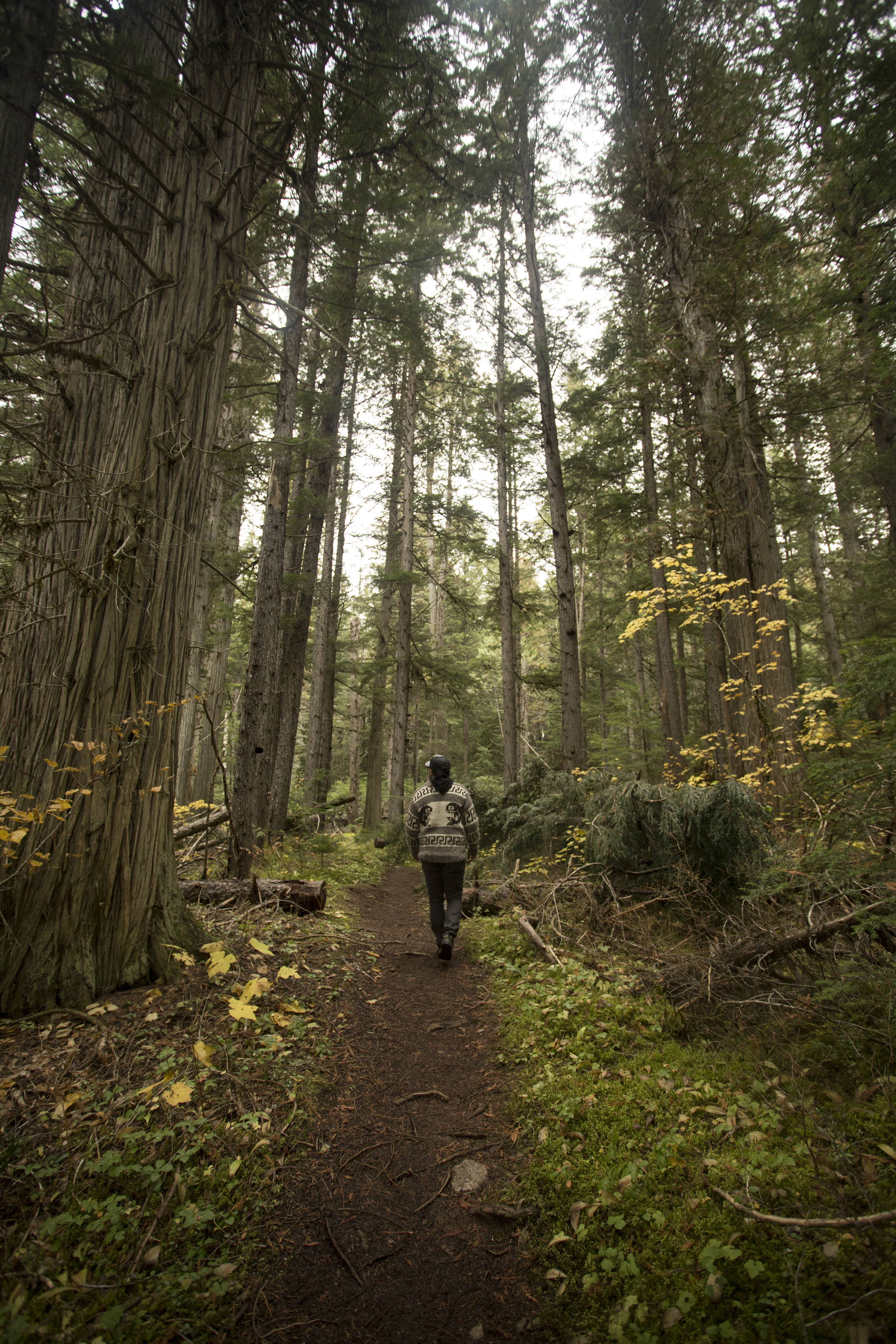
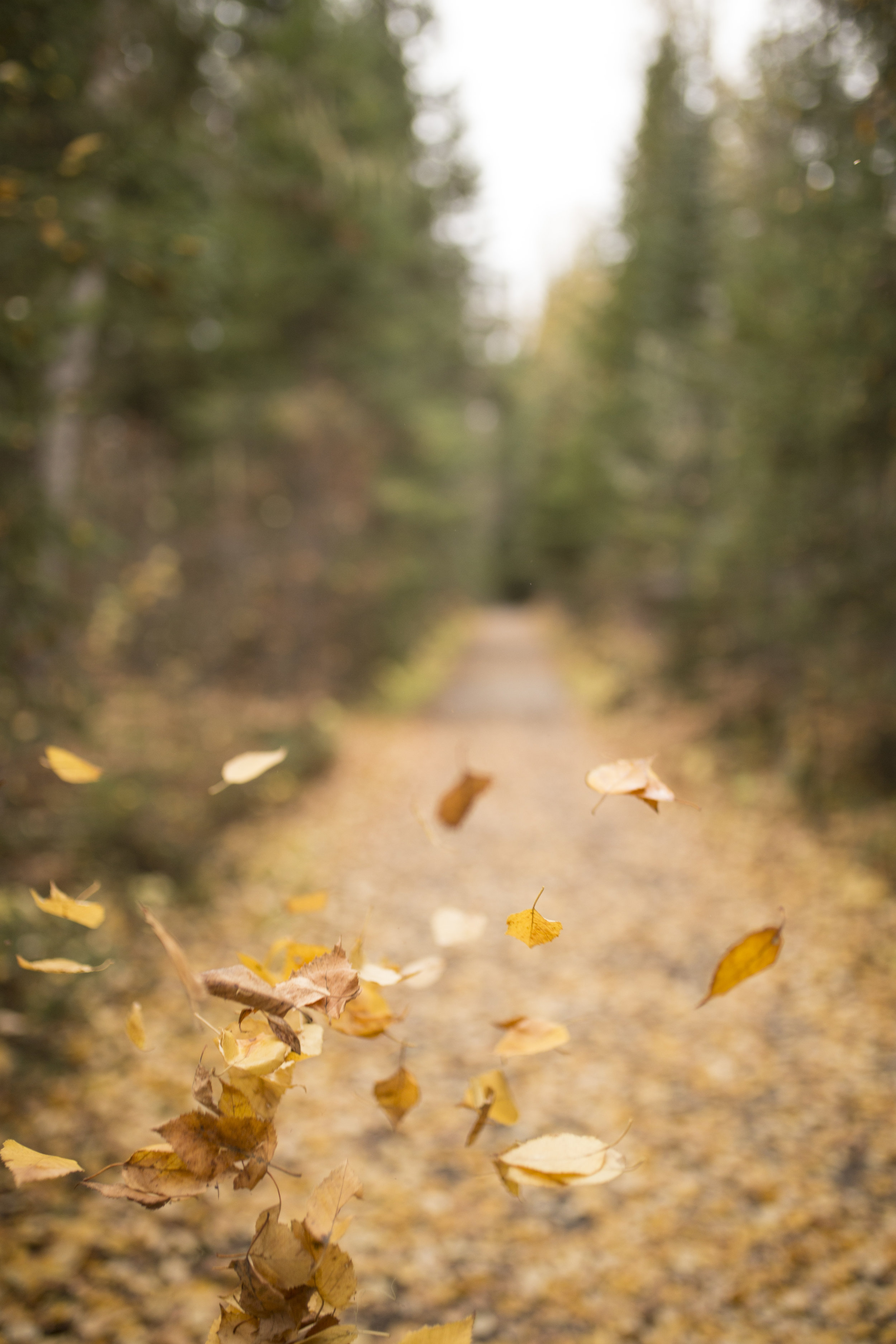
ABOUT THE AUTHOR
Matt Ferguson is a BC born and raised photographer, currently living in Kelowna. When his camera isn't strapped to him, you can usually find him at the beach with his family, skipping rocks or if it's cold enough, strapping on some skates and hitting a frozen pond.
www.mattfphotography.com
IG @mattfphotography
FB Matt Ferguson Photography
Salute to the Sockeye
The Adams River, specifically Tsútswecw Provincial Park (formerly, Roderick Haig-Brown) features one of the largest runs in North America. On a dominant year (like 2018), millions of fish can be observed as they make the long journey home.
A celebration of the importance of sockeye Salmon to the Secwepemc people
Cultural references:
The Adams River sockeye (sqleltenuw̓i)
Secwepemc (pronounced se-hwep-muhc)
People of the Shuswap Lakes and Adams Lake (Cstelen – hiss-tal-in)
Every fall, the typically calm waters of the Adams River turn red as sockeye salmon ‘run’ upstream, back to their birthplaces to spawn.
The Adams River, specifically Tsútswecw Provincial Park (formerly, Roderick Haig-Brown) features one of the largest runs in North America. On a dominant year (like 2018), millions of fish can be observed as they make the long journey home.
The Salmon Run
Salmon spend their early lives in freshwater rivers and lakes. They then swim to the sea where they spend most of their adult lives. Once matured, they swim with impressive precision back to the river in which they were born. Once they have reached these rivers, and sometimes exact grounds, they spawn (lay eggs).
A salmon run is the time of year when these sockeye make a rigorous migration from the pacific ocean to the upper reaches of BC’s rivers. After they spawn, the salmon typically die and the life cycle restarts with a new generation.
‘Dominant’ Runs
Every four years there is what’s called a ‘dominant’ run where the rivers see millions of fish return. 2018 and 2022 are dominant years, which are the best cases to see this impressive natural display.
The Adams River Salmon Society, predicts 7 to 14 million salmon will return to B.C. river systems from the ocean this year.
The Location - Tsútswecw Provincial Park (Roderick Haig-Brown)
Tsútswecw Park is a great place to visit at any time of year, but particularly in early October during the sockeye salmon run. It is known to be one of the best places to see large numbers of fish. Viewing platforms, guided tours and an interpretive centre ensure that visitors are welcomed and informed.
Tsútswecw Park is located in the Thompson Okanagan’s Shuswap region. The Shuswap region is known for beautiful lakes, waterways and lush forest - a mecca for recreational activities and tourists.
Park Hours: 9AM – 4PM
Find more specific details on the park (including maps and access) here.
The salmon run is a phenomenon that happens all over BC’s interior in the fall. While Tsútswecw Provincial Park is famous for its volume, there are other places to observe the salmon like Kelowna’s Mission Creek.
The Salute to the Sockeye Festival
Coinciding with dominant years, the Adams River Salmon Society hosts Salute to the Sockeye, a festival celebrating the salmon that have made the 500 km journey from the pacific ocean.
This year’s festival takes place at Tsútswecw Park from September 28th to October 21st.
For further event schedule and details, visit the Adams River Salmon Society.
Admission:
Entrance fees are collected during the festival by the Adams River Salmon Society and cover the costs of added services during this peak time.
$5.00 per private vehicle
$2.00 per person for a commercial van (10 to 20 passenger capacity)
$60.00 per bus (21 to 40 passenger capacity)
$75.00 per bus (41+ passenger capacity)
Salute Pass – available to The Adams River Salmon Society members only (visit the Reception/Membership desk in the souvenir tent for more information)
The Cultural Significance
Secwepemc (pronounced se-hwep-muhc) people have lived in South-Central B.C. for thousands of years. The Adams River sockeye (sqleltenuw̓i) have played a longstanding and important role in their lives.
This relationship between the Secwepemc people and salmon has been based on the core value of k̓wseltktnews - the idea that we are all related. This relationship ensured that the salmon were preserved and respected by emphasizing an interconnection between all living things.
Roderick Haig-Brown Provincial Park has recently been renamed to Tsútswecw Park. The Secwepemc word “Tsútswecw” (pronounced choo-chwek) translates to ‘many rivers’. A naming ceremony will be held as part of the Salute to the Sockeye Festival opening ceremonies on September 30, 2018.
To learn more about the Secwepemc relationship to the salmon and the modern pressures that these sockeye are facing, visit the Adams River Salmon Society.
To experience the Secwepemc culture, including a traditional winter home, canoe experiences, berry picking, visit Quaaout Lodge near Chase - just a short drive from Tsútswecw Park.
What to Know Before You Go
Please note that this is a popular event that draws a crowd. Please be cognizant of posted signs to ensure that the environmental impact on this natural space is minimized.
If you do bring your dog, ensure that they are on a leash and do not go into the water, this can be very disruptive for the salmon.
Plan your accommodation ahead of time. There is no camping available in Tsútswecw Park, but the towns of Chase and Sorrento are located just a short drive away.
How to get there
The park straddles the Adams River, between Adams Lake and Shuswap Lake. Access is off the Trans Canada Hwy (Hwy #1), 45 minutes east of Kamloops. Turn onto the Squilax-Anglemont Hwy and follow signs to the park.
Have a safe trip and feel free to reach out to @ThompsonOkanagan or @shuswap.tourism on social media if you have any questions.
ABOUT THE AUTHOR
Meghan Reading is a Canadian travel photographer. She grew up in the rocky mountains of Alberta but now calls British Columbia home. While she looks forward to continuing to explore the world with her camera, her favourite destination will always be her own backyard.
5 Great Trails & Tips for Hiking with Less Impact
Bucket-list worthy hikes in the Thompson Okanagan and tips on how to preserve our natural spaces for years to come.
Bucket-list Worthy Hikes in the Thompson Okanagan
Growing up in Alberta’s Rocky Mountains, I was constantly spoiled by endless alpine hikes and viewpoints. Before I moved to the Thompson Okanagan, I didn’t necessarily think of the region as a destination for hiking, but this belief quickly changed.
Over the years I have explored the vast majority of the Thompson Okanagan region and here’s what I would consider my “bucket-list” trails for avid hikers.
Kettle Valley Rail Trail, Hope to Castlegar
The Kettle Valley Rail (KVR) Trail and the Columbia & Western Rail Trail is the longest rail trail network in British Columbia extending from Hope to Castlegar. Once a comprehensive railroad system, the decommissioned tracks are now home to an extensive recreational trail providing almost 650 km (400 mi) of connected pathways throughout the region.
Experiences on the trail can be self-guided or part of an organized tour, with sections ranging from family-friendly day-trips to overnight legs for experienced riders.
Learn more about the trail at bcrailtrails.com.
Frosty Mountain, E.C. Manning Provincial Park
Frosty Mountain Trail is located in E.C. Manning Provincial Park, 45 minutes Southeast of Hope. This trail is strenuous, but known for its wildflowers and sub-alpine larches of which turn a vibrant gold around the third week of September.
Learn more about this trail from BC Parks.
Berg Lake Trail, Mount Robson Provincial Park
This internationally-renowned trail ventures to Berg Lake, an immaculately turquoise alpine lake at the base of the tallest mountain in the Canadian Rockies, Mount Robson. There are many other spectacular sights along the way like Kinney Lake and Emperor Falls, both worth the trek on their own.
BC Parks caps the number of people that are allowed to camp at any given time, so make sure to book well in advance or visit during the off-season. Limiting the number of people camping helps to manage the environmental impact of visitors and ensures campers are able to enjoy the serenity of this area without battling a crowd.
Learn more about this trail from BC Parks.
Enderby Cliffs Provincial Park, Shuswap
This steep but rewarding trail offers bird-eye views of the Shuswap and North Okanagan. Ensure you stick to the trail as this area is prone to erosion.
Learn more about this trail from BC Parks.
Lac Du Bois Grasslands Protected Area, Thompson Valley
This protected area represents both the Thompson Basin and Northern Thompson Uplands ecosystems. Containing unique and complex ecosystems, this area is a wonderful place to explore the diversity of the Thompson region.
Take the Cinnamon Ridge trail (4.25 km semi-loop/linear trail) to experience hoodoos, desert plants and grassland.
Learn more about this protected area from BC Parks.
Tips for Reducing Your Impact on Trails
Now we have all seen the signs that say “take only photos & leave only footprints” and while this is a great mantra, how do we actually ensure that we are being stewards of our parks and preserving the natural space for years to come?
With increasing numbers of tourists visiting our naturals spaces every year, we need to ensure that we are taking proper precautions to preserve our natural specimens for years to come.
I grew up spending a lot of time in the Canadian outdoors. Luckily for me, my father was in outdoor education, so environmental stewardship was ingrained in me from a young age. Whether I am on a 5 day backpacking trip through Mount Robson Provincial Park, or taking a stroll to Paul’s Tomb in Kelowna, there are many ways in which I strive to reduce my impact on our trail systems.
Plan Ahead
The most important tip is to plan ahead. Every area has different rules, regulations and facilities to be aware of. Check the weather forecasts ahead of time and be informed of any advisories and fire bans that may be in effect. Ensure you know what bathroom facilities are or are not available and whether there is trash disposal on-site.
Stay on Designated Trails and Avoid Shortcuts
It can be tempting to venture off the trail for a viewpoint or a unique photo opportunity, but this can be extremely hard on the local flora and fauna. Stick to the trail and take breaks on hard surfaces like rocks instead of on mosses or forest floor.
Minimize Campsite Impact
A poorly managed campsite can be unpleasant for visitors and may attract unwanted wildlife. To minimize your campsite impact, only camp in designated areas (ideally on tent pads), plan food proportions appropriately so that you don’t end up with leftovers, use as few dishes as possible and wash them with biodegradable soap, dispose of trash as posted or pack it out with you - never burn or bury trash at your campsite.
Respect Wildlife
Never approach, encourage contact with, or feed wildlife - this can be dangerous to both parties. Use bear hangs or locks and never eat or store scented items in your tent. For more wildlife safety tips, visit BC Parks.
Visit in the Off-Season
You may have to deal with more extreme weather, but the trail systems will be less busy and you might even have the whole place to yourself!
Other Resources
Organizations like BC Parks and Leave No Trace Canada are excellent resources for learning more about how you preserve natural landscapes for years to come.
It’s important to always be informed and prepared when heading out into the wilderness. Plan ahead, know the current conditions, and use Adventure Smart as a safety resource.
ABOUT THE AUTHOR
Meghan Reading is a Canadian travel photographer. She grew up in the rocky mountains of Alberta but now calls British Columbia home. While she looks forward to continuing to explore the world with her camera, her favourite destination will always be her own backyard.


